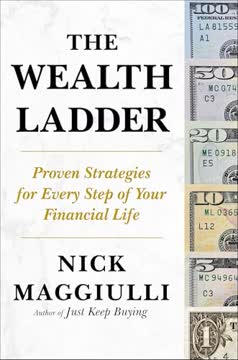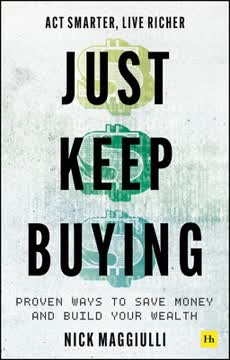Key Takeaways
1. The Wealth Ladder: A Framework for Financial Progress
Having the wrong framework when trying to get ahead financially can leave you spinning your wheels with little to show for it.
Rethink wealth. The Wealth Ladder offers a new philosophy for understanding and building wealth, moving beyond the linear assumption that more money always means more personal consumption or a drastically different lifestyle. It categorizes net worth into six distinct levels, each separated by a factor of ten, reflecting the exponential increase in wealth needed for a significant lifestyle change. This framework helps individuals understand that financial strategies must adapt as their net worth grows, rather than relying on a one-size-fits-all approach.
Six distinct levels. The ladder defines wealth levels from Level 1 (less than $10,000) to Level 6 (over $100 million), illustrating that each step up is exponentially harder to achieve. This explains why the number of people in each level decreases significantly as you climb higher. For instance, while 39.5% of the world's adults are in Level 1, only 0.000375% are in Level 6, highlighting the rarity of immense fortunes.
Strategy matters. Different wealth levels require different financial strategies, explaining why seemingly contradictory advice from financial experts can both be correct, depending on the audience's current position on the ladder. For example, budgeting is a crucial Level 1 strategy, but largely irrelevant for someone in Level 6. The Wealth Ladder provides a guiding framework to apply effort effectively, ensuring that your actions align with your current financial reality and future aspirations.
2. Spend Wisely: Align Consumption with Your Wealth Level
The most expensive thing some people own is their ego.
Wealth-based spending. Instead of spending based on fluctuating income, the Wealth Ladder advocates for spending based on your accumulated wealth, or net worth. This approach fosters financial discipline and protects against income disruptions, as income can be fickle and sharp declines are more common among higher earners. The 0.01% Rule suggests that you can spend 0.01% of your net worth daily without impacting your long-term finances, providing a practical guide for discretionary spending.
Freedom levels. Each rung of the Wealth Ladder corresponds to a different "freedom" level, indicating what you can comfortably afford without financial worry:
- Level 1 (<$10k): Paycheck-to-paycheck
- Level 2 ($10k–$100k): Grocery freedom
- Level 3 ($100k–$1M): Restaurant freedom
- Level 4 ($1M–$10M): Travel freedom
- Level 5 ($10M–$100M): House freedom
- Level 6 ($100M+): Impact freedom
Liquid net worth. To be conservative, it's advisable to base spending decisions on your liquid net worth (easily accessible funds) rather than your total net worth, which might include illiquid assets like home equity or retirement accounts. This ensures that your spending aligns with readily available funds, preventing situations where you are "house rich, but cash poor." The framework is flexible, adapting to changing prices and personal situations, emphasizing the underlying principle over rigid numbers.
3. Earn More: Leverage Skills and Opportunities for Income Growth
Your income today is the foundation of your wealth tomorrow.
Shifting earning strategies. As you climb the Wealth Ladder, your approach to earning money must evolve, moving from working harder to working smarter and eventually having money work for you. The 1% Rule suggests that any income opportunity should aim to increase your net worth by at least 1% to be worth pursuing, guiding decisions on side hustles, career advancements, and investments. This rule helps reevaluate opportunity costs, ensuring that your efforts are directed towards the most impactful activities for your current wealth level.
Income and wealth correlation. Data consistently shows a strong positive relationship between income and wealth; higher income earners tend to have significantly more wealth. This underscores that increasing your income is the most fundamental way to build wealth, serving as the bedrock for all financial aspirations. The median U.S. household income steadily rises with each wealth level, from $32,427 in Level 1 to over $4 million in Level 6.
Leverage for scale. To truly accelerate wealth accumulation, especially beyond Level 4, you need to employ leverage, separating your time from your income. Naval Ravikant identifies four types of leverage:
- Labor: Employing others to generate more value than their wages.
- Capital: Using money (your own or others') to invest and generate returns.
- Content: Creating scalable digital assets (e.g., books, videos) that can be distributed widely.
- Code: Developing software or applications that can be replicated infinitely.
These forms of leverage allow you to generate income without a direct, linear exchange of your time, making them crucial for higher wealth levels.
4. Invest Smart: Shift Towards Income-Producing Assets
The continual purchase of a diverse set of income-producing assets.
Asset allocation evolution. As individuals ascend the Wealth Ladder, their asset allocation shifts dramatically from basic necessities to income-producing assets. Households in Level 1 primarily hold cash and vehicles, while Level 2 adds a primary residence. By Level 3, retirement accounts become significant. However, Levels 4-6 increasingly concentrate wealth in assets designed to generate more wealth.
Income-producing assets. The key differentiator between those lower and higher on the Wealth Ladder is the proportion of income-producing assets in their portfolio. These include:
- Stocks/equities
- Bonds/fixed income
- Real estate/rental properties
- Farmland
- Small businesses
- Royalties
- Their own businesses/products
On average, Level 1-3 households have 20% or less of their assets in income-producing forms, while Level 4-6 households have 50% or more.
Business ownership for extreme wealth. For those in Level 5 and especially Level 6, business interests become the largest asset class. Individuals like Elon Musk and Bill Gates accumulated vast fortunes by owning significant shares in highly valuable businesses. While ownership doesn't guarantee results, it's the most common path to extreme wealth, though it comes with significant risks and requires a different skillset than traditional investing.
5. Levels 1-2: Build a Foundation and Invest in Yourself
Atypical results require atypical actions.
Escaping Level 1. Life in Level 1 (<$10k) is characterized by financial uncertainty, amplified bad luck, and limited opportunities. The primary goal is to raise income and avoid crippling debt, which can act as an anchor. Cutting spending is often insufficient as most income is spent on necessities; instead, focus on building marketable skills without incurring significant debt. This might involve working hard in any job, offering free help for experience, or pursuing affordable education.
Leveraging relationships. In Level 1, social wealth is a critical, often overlooked asset. Relying on friends and family for support during tough times is a common and effective strategy, with an implicit social contract to reciprocate when able. This human connection provides a buffer against financial distress and can be a vital stepping stone out of poverty.
Advancing in Level 2. In Level 2 ($10k–$100k), the focus shifts to "learn today, earn forever" by investing in education and skill development. This is the "sweet spot" where individuals have enough financial buffer to take calculated risks on education without being trapped by debt, unlike many in Level 1. Pursuing higher-paying work through specialized knowledge, trade schools, or boot camps can significantly increase hourly wages and accelerate wealth accumulation.
6. Levels 3-4: Accelerate Growth Through Investments and Business Equity
What got you here won’t get you there.
Compounding power in Level 3. In Level 3 ($100k–$1M), the power of compounding investments becomes profoundly impactful. Early and consistent investing allows money to work for you, with initial contributions having a disproportionately large effect on long-term wealth. For example, the first ten years of consistent contributions can account for over half of a forty-year investment portfolio's final value, illustrating the exponential nature of wealth growth.
Beyond traditional employment in Level 4. Level 4 ($1M–$10M) is often the hardest to escape because traditional career paths and even high savings rates become less effective at moving the needle. Even with a $500,000 annual income and $200,000 saved, reaching Level 5 can take over two decades. The strategy shifts from simply earning and saving to acquiring equity in a business that can be sold for millions or generate substantial annual income.
Business ownership as the lever. To break into Level 5, starting or joining a business with significant equity upside is crucial. This is where the four types of leverage (labor, capital, content, code) become essential, allowing you to separate your time from value creation. While challenging and risky, business ownership is the primary driver of wealth for most individuals in Levels 5 and 6, requiring experience, a financial safety net, and a focus on building a scalable asset, not just a glorified job.
7. Levels 5-6: Protect Your Fortune and Navigate Complex Risks
Only the paranoid survive.
De-risking in Level 5. For those in Level 5 ($10M–$100M), who often achieved wealth through a business sale, the focus shifts from accumulation to preservation. Overly concentrated investments, whether in one's own business or another asset, pose the greatest risk to wealth. Diversification becomes paramount to prevent catastrophic losses, as seen in stories of billionaires who lost fortunes due to overconcentration.
Non-financial threats in Level 5 and 6. Beyond investment risks, higher wealth levels introduce amplified non-financial challenges. Divorce can be financially devastating, costing half of one's net worth, and requires strong communication and understanding in relationships. Lawsuits become more frequent and expensive, necessitating a trusted legal team and proactive risk mitigation (e.g., insurance, privacy protection).
Managing perceptions and motivations. Wealth can distort perceptions, leading to a "never-ending then" where one constantly strives for more, even when objectively rich. This relative deprivation can cause dissatisfaction, as exemplified by Roy Raymond's tragic story or Charlie Munger's desire for "multiple trillions." In Level 6 ($100M+), the primary concern shifts from acquiring more wealth to protecting it and defining one's legacy, as most consumption needs are already met.
8. Patience is Key: Wealth Takes Time to Accumulate
Without the ability to stick to your plan, none of the ideas in this book will prove useful.
Time is a critical factor. Wealth accumulation is a long-term process, often taking decades. The median age of U.S. households tends to increase with each step up the Wealth Ladder, with Level 4 ($1M–$10M) having a median age of 62, and Level 6 ($100M+) a median age of 66. This challenges the media's portrayal of young, instant millionaires, setting realistic expectations for the journey.
Wealth mobility over time. Analysis of U.S. household data over ten and twenty-year periods reveals that most households tend to stay in their current wealth level. However, longer time horizons show significantly more upward mobility. Over twenty years:
- 32% of households move up one wealth level.
- 5% of households move up two wealth levels.
This demonstrates that consistent effort over extended periods yields substantial results, even if progress isn't always rapid.
The power of consistency. Even if a household doesn't move up a full wealth level, they often still build significant wealth. For example, households remaining in Level 4 for twenty years gained an average of $1.1 million. This reinforces that patience and consistent application of wealth-building strategies are crucial, as the compounding effects of time are undeniable.
9. Money's Limits: Happiness is Logarithmic, Not Linear
If you are poor, more money will probably make you happier. If you are happy, more money will probably make you happier. But if you aren’t poor and you aren’t happy, more money won’t do a thing.
Happiness and income. Research indicates that money can buy happiness, but the relationship is logarithmic, not linear. Small increases in wealth for those in lower levels (Level 1-2) lead to significant boosts in happiness by alleviating stress and worry. However, as wealth increases, progressively larger sums are needed to achieve the same incremental increase in happiness.
The "never-ending then." A common pitfall is the "never-ending then" mindset, where individuals constantly chase the next financial milestone, believing it will bring ultimate satisfaction. This pursuit is often a mirage, as habituation causes new levels of wealth to quickly become the new normal, pushing the goalpost further away. This cycle can lead to perpetual dissatisfaction, even for the extremely wealthy.
Beyond financial metrics. The true irony of wealth is realizing that many of life's greatest pleasures are free or relatively inexpensive. The author's personal experience and stories like Bud, the cheerful facilities coordinator, highlight that contentment often stems from mindset and non-financial aspects of life, rather than bank balances. Money is a tool, but it cannot inherently provide meaning or emotional well-being if those foundations are not already present.
10. Beyond Money: Cultivate All Five Types of Wealth
What salt can do to our food, money can do to our lives.
Money as an enhancer. Financial wealth, like salt, is a "great enhancer" that elevates existing flavors in life, rather than adding new ones. It makes enjoyable experiences more accessible and comfortable, but it is not fulfilling on its own. Without other forms of wealth, financial riches can feel bland and pointless, akin to a plate full of salt with nothing to eat.
Five types of wealth. To live a truly rich and fulfilled life, it's essential to cultivate a balance of five types of wealth:
- Financial wealth: Your net worth and liquid assets.
- Social wealth: The quality of your relationships with family, friends, and community.
- Mental wealth: Your psychological and emotional capabilities, including work satisfaction, stress management, and self-esteem.
- Physical wealth: Your health, encompassing sleep, nutrition, strength, and cardiorespiratory fitness.
- Time wealth: The ability to spend your time purposefully and as you desire.
Interconnectedness of wealth. These forms of wealth are interconnected and mutually reinforcing. Strong social connections are linked to better health and happiness, often valued as much as significant income increases. Mental wealth, derived from purposeful work and managed stress, contributes to overall well-being. Physical health is foundational, as without it, other forms of wealth lose their enjoyment. Time wealth, the freedom to pursue meaningful activities, is a luxury enabled by financial stability but requires intentionality to avoid existential crisis.
11. Define Your Summit: Action, Not Just Wealth, Creates Legacy
Legacy = Action * Wealth
Purpose beyond accumulation. For those in Level 6, the focus shifts from acquiring more wealth to defining and enacting their legacy. While immense financial resources provide "Impact freedom," true legacy is a product of action amplified by wealth. Alfred Nobel's story exemplifies this, as he transformed his controversial fortune into a lasting positive impact through the Nobel Prizes, driven by a desire to change how he would be remembered.
The paradox of choice. The journey up the Wealth Ladder often requires crucial choices made before one has the wisdom to choose wisely. The author's personal journey highlights how seemingly small, chance encounters and persistent effort, combined with a willingness to adapt strategies, led to significant financial progress. These "inflection points" are often only recognizable in retrospect, emphasizing the importance of trusting the process and continuously striving for improvement.
Redefining success. Ultimately, the Wealth Ladder is not just about accumulating money, but about building a life that aligns with your values. Money is a relative concept, and its perceived value changes as you gain more of it. The greatest irony of getting wealthy is realizing that many of life's most profound pleasures—friends, family, health, purpose—are free. The true "summit" is not a specific financial figure, but a state of contentment achieved by balancing financial success with the cultivation of all other forms of wealth.
Last updated:
Review Summary
The Wealth Ladder offers a practical framework for building wealth across six levels, from under $10,000 to over $100 million. Readers appreciate Maggiulli's data-driven approach, relatable anecdotes, and emphasis on adapting strategies as wealth grows. The book provides insights on spending, investing, and starting businesses. While some find it oversimplified or lacking novelty, many praise its accessible tone and realistic perspective on money's role in happiness. Critics note its US-centric focus and potential irrelevance for higher wealth levels.
Similar Books
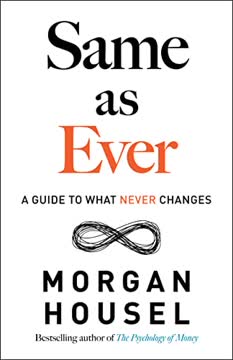
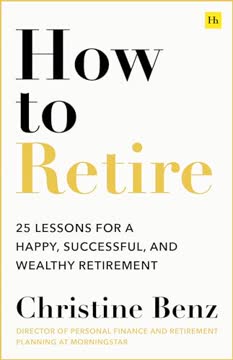

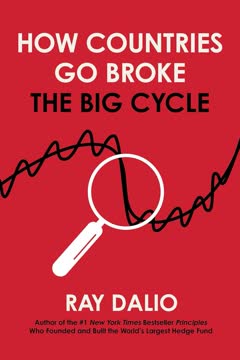
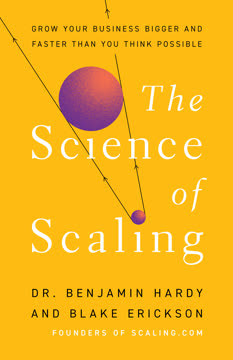
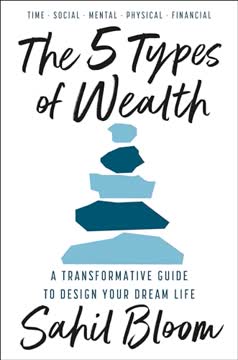
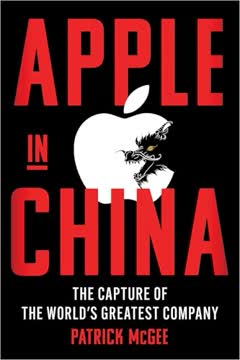

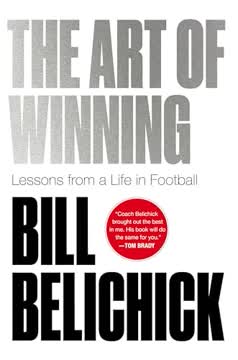
Download PDF
Download EPUB
.epub digital book format is ideal for reading ebooks on phones, tablets, and e-readers.
